Pollution of the River Nile as the Cloaca of Egypt
by
Mina Malak and Robert Gorter, MD, PhD.
Introduction:
The River Nile is a major cloaca for Egypt and dumps all highly toxic materials and nuclear waste into the Mediterranean Sea for decades with the trend increasing. In The Netherlands, thousands of farmers were forced to close as they had 2-4 cows grazing and urinating on a piece of land as large as a football field was considered a danger to the planet and strongly worsening the Climate change Narrative.
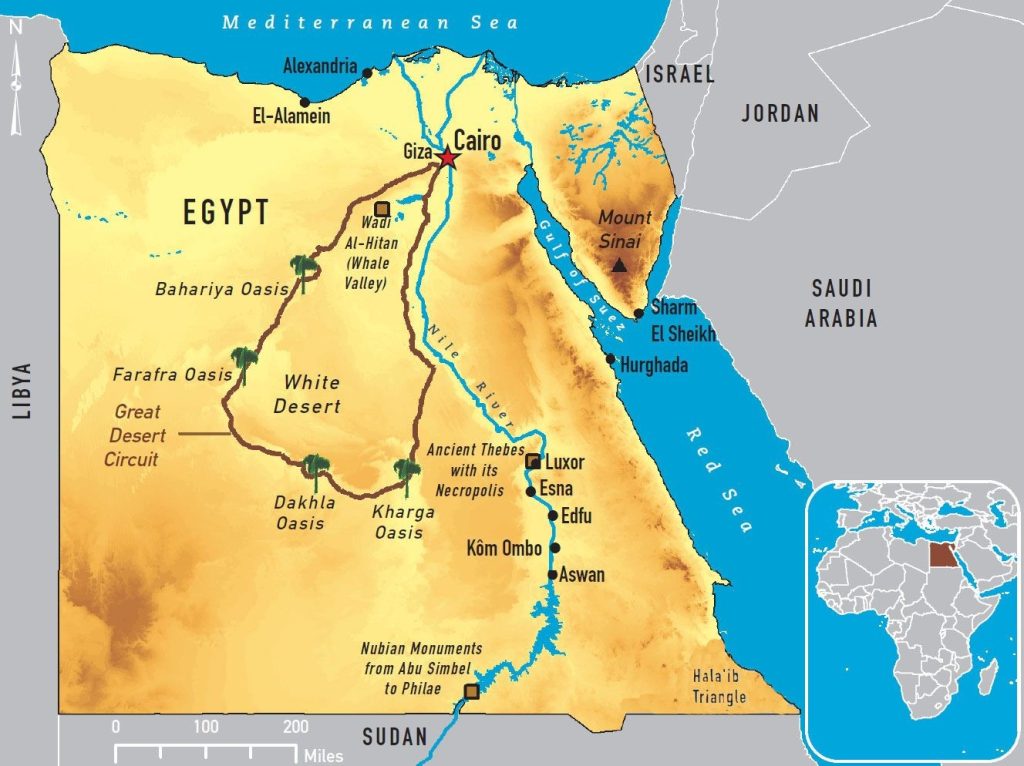
Nile River is the valued natural and exclusive source of fresh water in Egypt, where the drinking water supply is limited to the river. The water quality of 24 sites between Aswan and Cairo along the Nile was investigated. To evaluate the suitability of water for aquatic life and drinking purposes, the indices of water quality (WQI), heavy metal pollution (HPI), and contamination (Cd) were computed. The water quality variations were mainly related to inorganic nutrients and heavy metals, where, the sites affected by intensive loads of urban, agricultural, and industrial wastewater showed serious deterioration of water quality compared with other sites. The anthropogenic impact sites showed high HPI and Cd values and were associated with high risks, where, most of the studied metals often exceeded the drinking water and aquatic life limits. The aquatic WQI indicated that the Nile water quality deteriorated and extended from poor to marginal while drinking WQI varied from marginal to good. Accordingly, the river becoming unfit for aquatic life and the situation is getting worse by decreases in the water budget from the Nile in Egypt by building of the Grand Ethiopian Renaissance Dam, where the dilution strength of the Nile system will reduce. However, the Aswan High Dam (AHD) construction resulted in significant changes in the physical, chemical, and biological properties of the downstream Nile water.
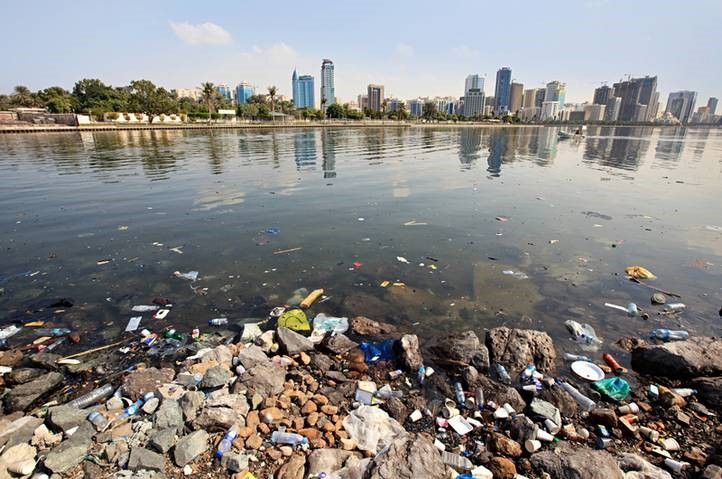
References
H.H. Abd El-Hady
Alternations in biochemical structures of phytoplankton in Aswan Reservoir and River Nile
Egypt. J. Biol. Environ. Sci., 4 (2) (2014), pp. 68-80
A.M. Abdel-Satar
Water quality assessment of River Nile from Idfo to Cairo
Egypt. J. Aquat. Res., 31 (2) (2005), pp. 20-2023
Causes of pollution of the Nile River
Drainage of industrial water
One of the main causes of pollution in the Nile River is the factories that dump heavy metals into the river, in addition to chemicals and dangerous substances, and this poses a threat to human and animal health, and agriculture is affected by that, as bacteria and minerals in the water impede the growth of plants that are irrigated with, especially in the Nile Delta region. Where the percentage of pollution is higher than others, and it is worth noting that the increase in the percentage of lead and ammonia gas in the river causes the death of fish and other living organisms.
Organic pollutants
Organic pollutants such as fertilizers and pesticides are one of the many causes of Nile pollution. A study conducted in 2016, it was found that the average percentage of chlorofluoride (CIF3) molecules is far above what is considered “safe.”- It is worth noting that the amount of pesticides used in Egypt each year is 600 tons, according to a study conducted in 2009.
Exposure to larger amounts of ClF3, as a liquid or as a gas, ignites living tissue, resulting in severe chemical and thermal burns. ClF3 reacts violently with water and exposure to the reaction also results in burns. The products of hydrolysis are mainly hydrofluoric acid and hydrochloric acid, which are usually released as steam or vapor due to the highly exothermic nature of the reaction.
Agricultural drainage
The main pollutants coming from agricultural drainage into the Nile River are salts, pesticide residues (i.e. RoundUp), pathogens, and organic and inorganic toxic pollutants. It is worth mentioning that the Nile River receives water from 124 drainage sources, of which 67 are agricultural, and the rest are industrial drainage sources.
Oil pollution
A few studies have proven the presence of large amounts of oil in the Nile River, and its concentration is greater in the areas where oil is distributed, ship parking areas, docks, and the electricity operating station on the Cairo side, and the areas where factories are concentrated. The oil in the Nile River increases in winter and spring over summer due to the increase in evaporation.
Other reasons for pollution of the Nile River
There are quite a few other reasons that lead to pollution of the Nile, the most important of which are: the increase in the population rate and thus the increase in water consumption from it; and radioactive waste.
Sewage from hotels and neighborhoods near the river.
Inhabitants are throwing waste into the river and cleaning animals near it. Also, throwing animal carcasses into the river is a source of great concern
References
Fady Michael (1-4-2014), “Egypt and Water Pollution”, www.savethewater.org, Retrieved 16-5-2018. Edited. abt dr Amir Dakkak (22-7-2017), . Edited, “Egypt’s Water Crisis – Recipe for Disaster”, www.ecomena.org, Retrieved 16-5-2018. Edited. Hesham Dahshan, Ayman Megahed, Amr Abd-Elall, and others (7-10-2016), “Monitoring of pesticides water pollution-The Egyptian River Nile”, www.ncbi.nlm.nih.gov, Retrieved 16-5- 2018. Edited. Mostafa El-Sheekh (1-2009), “River Nile Pollutants and Their Effect on Life Forms and Water Quality”, www.researchgate.net, Retrieved 16-5-2018. Edited. ↑ Ahmed Moursy (1983), “Oil pollution studies in the Nile River. I. Survey of oil and grease in Nile water”, www.sciencedirect.com, Retrieved 16-5-2018. Edited.
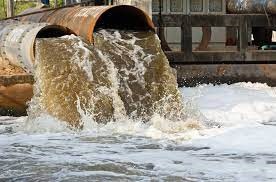
17 violating industrial establishments, 70 Nile River pollution cases, and 29 violations of the fishing law were seized
“Government utilities” are the first cause of pollution of the Nile River, and censorship is “ink on paper.” [1] 7th June 2023
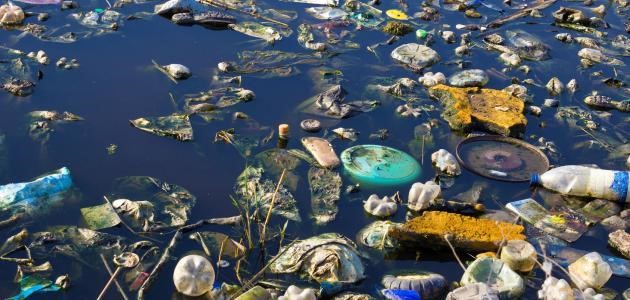
The increase in pollution rates of the Nile River and waterways is usually matched by an increase in the rates of government promises that talk about plans, studies, and the allocation of large budgets to deal with the ongoing pollution of the Nile River, but the tragic reality appears to be completely contrary to these statements and promises.
Despite the assignment of responsibility for monitoring the Nile to some ministries and government agencies, government factories and sewage stations, according to observers, are the main cause of its pollution, with the absence of full control over other sources of pollution from factories and private facilities.
After the surprise of the “Aswan guy” to the president… the list of pollution is long, from Aswan to Alexandria
And at a time when some considered the news of the pollution of the Nile River in Aswan a surprise, triggered by the Aswan youth, Alaa Mustafa, who bravely spoke before President Abdel Fattah El-Sisi at the recent youth conference in Aswan, the reality indicates that the river’s pollution is intentional and present in all governorates of the Republic, from Damietta and Rashid to even Aswan, where government officials deliberately obscure the facts in this regard and hide them from public opinion.
And with the failure of the “environment, health, irrigation, and agriculture” ministries to confront the pollution of the Nile River, they do not stop issuing statements about working to mitigate the size of the pollution crisis and the consequent threat to the health of Egyptians and the spread of diseases among them.
Studies: The failure of successive governments to treat the drains of “Bahr Al-Baqar, Kouchner, and Al-Rahawi” led to the spread of diseases and the elimination of fish.
Dr. Diaa Al-Qusi, a water resources expert, advisor to the former Minister of Irrigation, and vice president of the National Research Center says: “The problem of pollution of the Nile River lies in the prevalence of responsibility for the Nile River and the absence of a single authority supervising it, as the responsibility for monitoring it was dispersed among several ministries such as irrigation and health. The Ministry of Agriculture is followed by the Nile Islands, and the Ministry of Irrigation is responsible for irrigation, canals, drains, and distribution of water quantities, and (housing) has drinking water intakes on the river, and the Ministry of Transport is followed by river transport, and the Ministry of Interior is followed by the water bodies police, and the Ministry of Health draws samples of water To ensure its suitability for drinking, and the Ministry of Environment is also a supervisory body over it, despite this, most of the previous ministries entrusted with preserving the river participate in polluting the river with waste, because the sewage stations belong to the Ministry of Housing, and the factories belong to the business sector, and the clubs spread on its banks belong to all government agencies ».
And Al-Qusi continues: “In international rivers, there is also a sanctuary on the two banks, and it is an imaginary line whose area varies according to each region and it is very important like the private sanctuary of people, but unfortunately those who violate the sanctity of the river are government clubs and all these clubs throw their waste on it, and they also prevent citizens to enjoy it.”
Noureddine: Correct treatment of wastewater will lead to the provision of 7 billion cubic meters, suitable for irrigating 1.25 million acres.
Dr. Magdy Tawfik, Professor of Water Environment at the Faculty of Science, Ain Shams University, mentions in one of his research that the pollution of the Nile River comes from industrial and agricultural wastes and sewage wastes, explaining that the most dangerous types of waste that flow into the Nile River are industrial wastes that usually come out of factories loaded with water. With lead and heavy metals, pointing out that “the stages of purifying the Nile water and adding chlorine to it purify the water from bacteria only, but they do not purify it from heavy metals and industrial waste: even significant amounts of nuclear waste we found and the concentration is increasing by the year.”
And official reports stated recently that “industrial pollutants discharged into waterways reach 270 tons per day, which is equivalent to the pollution resulting from 6 million people, while the annual amount of sewage dumped in the Nile is about 5 billion cubic meters, of which only 2 billion cubic meters are treated.”
Environmental research indicated that the pollution of the Nile River led to a great loss in agricultural production, the spread of diseases among the people and livestock, and the loss of fish wealth in the Nile, as pollution led to the disappearance of 30 species of Nile fish, especially in Lower Egypt.
Despite the state’s issuance of many legislations and penalties, the violations are still continuing, along with pollution that causes large economic losses borne by the state, amounting to 3 billion pounds annually, equivalent to 6% of the gross national product. This pollution has resulted in the closure and suspension of more than 8 pumping and lifting stations. The value of each water is more than 20 million pounds, and the use of more than 2.4 billion cubic meters of water annually stops, which causes large agricultural losses as a result of dumping pollutants into drains and water canals.
Prof. Robert Gorter: what is usually forgotten is, that the River Nile dumps all its toxic and nuclear waste into the Mediterranean Sea and has, therefore, had a global impact. And, the groundwater of Egypt and its surrounding countries are also affected.
Dr. Nader Noureddine, a professor of water resources at Cairo University, says: “The Nile River suffers from severe pollution along the course of the river in Egypt from Aswan to the two branches of the estuary, and about 102 factories throw a billion cubic meters of industrial and chemical waste into the Nile River, and in Upper Egypt, there are 5 thousand basins.” government to collect wastewater before it is spent on the Nile, according to a report by the former Minister of Environment in 2010, and this means that the state throws wastewater directly into the Nile without any real treatment, and the “Kouchener” bank is considered one of the most dangerous banks that pour waste 3 governorates in Lake Burullus, next to the Ocean Drain, which carries sewage from Upper Egypt to the Nile River.
Nordin adds: “The danger of sewage water lies in the fact that it carries many dangerous pollutants such as coli bacteria, and dangerous viruses that cause typhoid, cholera, and polio. Viral virus in every 10 cubic milliliters of water, although the permissible percentage for drinking water is 5 thousand cells and 10 thousand cells for irrigation water, and through the large difference between the permissible limit and the existing pollution, it is confirmed that our water is severely polluted and that the situation is dangerous and does not accept underestimation or Retreat from implementing urgent plans to save the children of Egypt and its citizens from pollution and diseases, and it has recently been noted that the death rate of children has increased above the normal rate in countries similar to ours in income, due to water-borne diseases.
And the water resources expert continues, saying: “The government promised that it would deliver sewage to 50% of villages in Egypt within 5 years, but it did not promise to solve the drainage crisis on the Nile before the end of this period.”
Nordin called on the government to establish triple treatment plants before pumping sewage into the Nile, in addition to setting up an advanced treatment plant after triple treatment so that it is drinkable, because triple treatment does not eliminate viruses such as hepatitis virus and polio virus, and the World Health Organization (WHO) was She conducted an analysis of wastewater in Egypt and discovered that the polio virus is still present in Egypt, so she recommends every time a campaign for polio, and the sewage samples prove this because it is a product of human waste.
The water resources expert points out the importance of Egypt benefiting from the experiences of countries that have achieved great success in the field of water treatment, such as Singapore, Japan, and Germany, and the latter reuses water more than 10 times. “If Egypt can treat water well, we will save 7 billion cubic meters of water annually.” It will be used in agricultural activity, and this water will irrigate one and a quarter million acres.”
Experts also warn of the danger of the “Rahawi Bank”, which is considered one of the most dangerous foci of pollution in Egypt, because it throws all the pollutants of the Giza governorate into the Rashid branch in front of the village of Al-Rahawi. Yearly, the crisis increases in the winter season with the winter dam of the Nile River and the decrease in its water level.
Jumaa Muhammad, an employee of a private sector company and a resident of the village of Al-Rahawi, which the bank penetrates and divides into two halves, says: “The Al-Rahawi Bank is a major crisis factor in the region because it pollutes the Nile and kills fish. If you pay attention, you will find the Nile water clean before it mixes with sewage water.” And after it mixes with sewage water, it turns into very turbid and black water. The biggest problem is that its effect extends over long distances, and not, as officials claim, that the water runoff deposits pollutants down the river.
The water of the Rashid branch, which is contaminated with sewage and industrial water, has caused the closure of a large number of drinking stations on the Rashid branch in the governorates of Menoufia and Gharbia, after the residents’ constant complaints about the contamination of drinking water and it’s causing chronic diseases such as kidney and liver failure, which forced the government to establish drinking stations. A new “artesian” cost the state millions of pounds along the Rashid branch, despite the presence of the old stations directly on the river.
Muhammad Ibrahim, who resides in the village of Mishla in the center of Kafr El-Zayat, says: “The water of the Rashid branch in Gharbia is polluted because of the Rahawi drain coming from the Giza governorate and the Danshway drain coming from the Menoufia governorate. The large one in Kafr El Zayat.
And Ibrahim adds: “The pollution of the Rashid branch and the infection of the people of our village with chronic diseases and increase of various forms of cancer forced the water company to set up a new drinking station and close the old station on the Nile at a very high cost, as the Solomon facility drinking station was converted from a filter to an artesian one only a year ago, and yet it is not preferred.” The people are drinking, and another station is being established in the village of Aqua Al-Hessa, which is affiliated with the Kafr Al-Zayat Center.
The government clarifies the fact that drinking water is polluted after the emergence of turbidity in the waters of the Nile River and its color change [2] 8th June 2023

Dr. Mohamed Abdel-Aty, Minister of Water Resources and Irrigation – archive photo
On Wednesday, the Media Center of the Council of Ministers denied images circulated by some websites and social media pages claiming that drinking and agricultural water was polluted and unfit for human consumption after the appearance of turbidity in the waters of the Nile River and its color change.
The media center contacted the Ministry of Water Resources and Irrigation, which denied these reports, stressing that there is no truth to the contamination of drinking and agricultural water or its unfitness for human consumption after the appearance of turbidity in the waters of the Nile River and its color change, explaining that the water turbidity in the Nile River and its color change is a natural matter. As a result of the arrival of torrential waters laden with dust, sand, and silt, after the wave of rain and torrential rains that the country was exposed to over the past few days, which confirms that the floodwater drainage network is working with high efficiency, indicating that this turbidity does not have any negative effects on the quality of the water. Drinking and farmland. Elmasry Alyoum newspaper Wed 23-02-2022.
Ministry of the Environment and the Protection of the Nile River and Waterways from Pollution
The Ministry of Environment exerts a lot of effort and coordination with all ministries and concerned authorities to reduce pollution on the Nile River and waterways, through periodic follow-up and inspection of facilities that have direct and indirect drainage on freshwater bodies, and implement periodic monitoring programs to study and evaluate the quality of the Nile water. And its branches Damietta and Rashid, as the network of the Ministry of Environment includes 69 monitoring sites on the Nile River in addition to three points of the High Dam Lake (Lake Nasser), where monitoring takes place in 16 governorates (Aswan – Luxor – Qena – Sohag – Assiut – Minya – Beni). Suef – Cairo – Giza – Qalyubia – Menoufia – Gharbia – Dakahlia – Damietta – Beheira – Kafr El-Sheikh) through the central laboratory and the laboratories of the regional branches of the Environmental Affairs Agency.
The Ministry is working on studying the sources of pollution on the Nile River and its two branches, and reducing pollution loads through the implementation of several axes as follows:
The first axis: environmental monitoring and inspection
Through the implementation of a periodic program to inspect companies that carry out direct or indirect industrial drainage into the Nile River, and to follow up the environmental sanitation plans implemented by the facilities to reconcile their environmental conditions in accordance with the limits of the law, where the following is done:
The regional branches of the Environmental Affairs Agency, in partnership with the Ministry of Water Resources and Irrigation and the Industrial Development Authority, carry out extensive campaigns to inspect industrial establishments that drain into the Nile River, whether direct or indirect.

The second axis: is the real-time monitoring network
The total number of stations of the real-time monitoring network has reached 22 stations to monitor the quality of water in the waterways and the quality of the industrial wastewater of the facilities to which it is disbursed. These stations were distributed as follows:
9 Stations to monitor water quality in the Nile River in the governorates (Aswan, Luxor, Qena, Sohag, Assiut, Minya, Beni Suef, and Cairo).
9 Stations to monitor the quality of industrial wastewater for establishments that discharge directly into the Nile River in the governorates (Aswan, Luxor, Qena, Sohag).
1 One station at the Max pump station, there are 3 stations to monitor the water quality in Lake Mariout.
The third axis: provides financing mechanisms
Providing technical and material support to reconcile the environmental conditions of industrial facilities, including, for example, providing support to the Abu Qurqas Sugar Factory of the Sugar and Integrated Industries Company in Minya Governorate, through an environmental protection project for the private sector and the industrial public business sector, to install a dryer for vinasse liquid in the factory in order to achieve full compatibility with the quality of Water draining on the Nile River (indirect drainage – Atledem drain).
References
Elyoum else newspaper by: Manal Elesewy Monday, November 15, 2021 07:00 AM
Pollution costs Egypt 5% of its gross product. This is the government’s plan to contain the crisis [3] 9th June 2023
Statistics and data from the IQAir website, which specializes in monitoring environmental pollution globally, specifically with regard to air quality, revealed that Egypt ranks ninth in the world on the list of the most polluted countries.
The classification is based on the criterion for the presence of PM2.5 particles in the air, which are fine particles with a diameter of less than 2.5 micrometers, which is a unit of length equal to a thousandth of a millimeter.
The World Health Organization lowered the recommended average annual exposure limit for PM2.5 from 10 to 5 micrograms (one-thousandth of a gram) per cubic meter of air in 2021.
According to the site, Egypt’s air is loaded with 46.5 micrograms of fine, mainly toxic particles.
According to the World Health Organization, around 7 million people worldwide die prematurely each year due to air pollution.
The ranking of the ten most polluted countries is as follows:
1- Chad (89.7)
2- Iraq (80.1)
3- Pakistan (70.9)
4- Bahrain (66.6)
5- Bangladesh (65.8)
6- Burkina Faso (63)
7- Kuwait (55.8)
8- India (53.3)
9- Egypt (46.5)
10- Tajikistan (46)
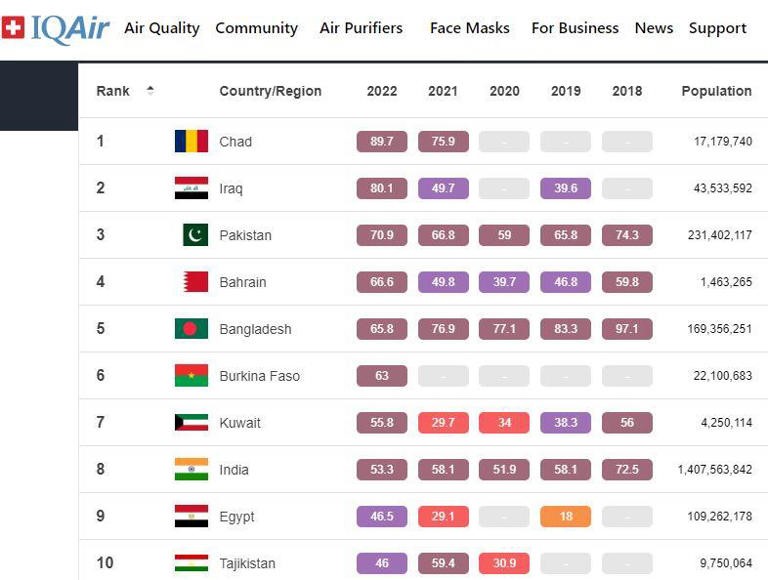
But the interesting thing is that Cairo ranked 126th in the world in terms of air pollution, with a value of 47.4 micrograms.
Of course, the least polluted regions in Egypt come from northern Europe and the island countries in the Pacific Ocean.
According to World Bank estimates, environmental degradation from air pollution costs Egypt about 5% of its annual gross national product, or about $2.4 billion annually.
Egypt has suffered during the past years from an increase in pollution of air and water, which prompted the government to take a set of measures to prevent the crisis from deteriorating and to preserve the environment.
How big is the global air pollution problem?
Air pollution is the leading environmental cause of disease and premature death worldwide. Fine particulate matter or aerosols that cause air pollution, also known as particulate matter, or particulate matter with a diameter of 2.5 microns, are responsible for 6.4 million deaths annually from diseases such as coronary artery disease, stroke, lung cancer and obstructive disease, chronic pneumonia, pneumonia, type 2 diabetes, and neonatal disorders. About 95% of these deaths occur in developing countries, where billions of people are exposed to concentrations of particulate matter with a diameter of 2.5 microns, both outside and inside homes, which are many times higher than indicated in the guidelines set by the World Health Organization. Estimates included in a report prepared by the World Bank indicate that the health damages caused by air pollution amount to $8.1 trillion per year, equivalent to 6.1% of the global gross domestic product.
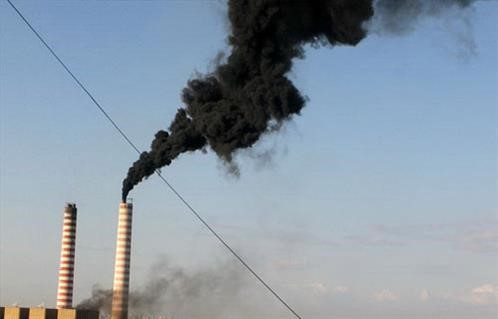
Cairo is the second polluter in the world. Air pollution is sounding the alarm and costing Egypt 60 billion – Al-Ahram Gate
The poor, the elderly, and young children from poor families are the most affected by the health effects associated with air and water pollution, and they are also the least able to deal with it. Global health crises, such as the coronavirus pandemic, are weakening the resilience of societies. To make matters worse, there is an association between exposure to air pollution and increased hospitalizations due to infection with the Coronavirus and related deaths. In addition to the impact of air pollution on health, it is also associated with the loss of biodiversity and ecosystem and has negative impacts on human capital. On the other hand, reducing air pollution not only improves health but also strengthens economies. A recent World Bank study found that a 20% decrease in the concentration of particulate matter as small as 2.5 microns in diameter is associated with a 16% increase in growth in employment rates and a 33% increase in the growth rate of labor productivity.
Estimates included in a report prepared by the World Bank indicate that the health damages caused by air pollution amount to $8.1 trillion per year, equivalent to 6.1% of the global gross domestic product.
How is air pollution related to climate change? [4] 10th June 2023
Air pollution and climate change are two sides of the same coin, but they are dealt with separately. Therefore, they must be addressed together with a focus on protecting people’s health – especially in low- and middle-income countries – in order to strengthen human capital and reduce poverty.
Air pollutants and greenhouse gases often come from the same sources, such as coal-fired power plants and diesel vehicles. Some air pollutants do not last long in the environment, particularly black carbon – a fraction of particulate matter as small as 2.5 microns in diameter. Other short-lived climate pollutants include methane, hydrofluorocarbons, and ground-level or lower-atmospheric (tropospheric) ozone. These pollutants are much more powerful than carbon dioxide in terms of their ability to increase temperature. Methane is a primary indicator of the state of tropospheric ozone, and the Climate and Clean Air Coalition and the Stockholm Environment Institute say it kills about one million people each year. It is 80 times more powerful than carbon dioxide in terms of warming the planet’s atmosphere over a 20-year period. The relatively short duration of these pollutants, combined with their strong ability to increase air temperature, means that interventions to reduce their emissions can deliver climate benefits in a fairly short time. If we tackle short-lived climate pollutants, we have the dual benefits: better air quality and improved health where we live, and the global benefit of reducing the impacts of climate change.
Air pollution costs Egypt no less than 47 billion pounds annually Tuesday, April 20, 2021. The World Bank
A study by the World Bank found that particulate matter 2.5 microns in diameter from fossil fuel combustion, such as coal combustion or diesel vehicle emissions, is among the most toxic of these types of particulate matter. The particulate matter produced by these sources is more harmful to health than the particulate matter released by most other sources of air pollution. Addressing these sources – such as coal combustion and traffic – makes it possible to deal with more toxic air pollution. And because these sources are also considered among the main factors that contribute to the rise in air temperature, addressing the issue of air pollution resulting from them also mitigates the effects of climate change.
Air pollution and climate change are two sides of the same coin, but they are being dealt with separately. Therefore, they must be addressed together with a focus on protecting people’s health – especially in low- and middle-income countries – in order to strengthen human capital and reduce poverty.
Prof. Robert Gorter: Can we expect air quality to improve in the future if countries reduce carbon emissions in their economies? It is not the carbon emission per-se but the particles and all toxic waste products that threaten public health and the future of the planet. The average CO2 concentration in the air is .02%.-0.4% since ca. 150 years
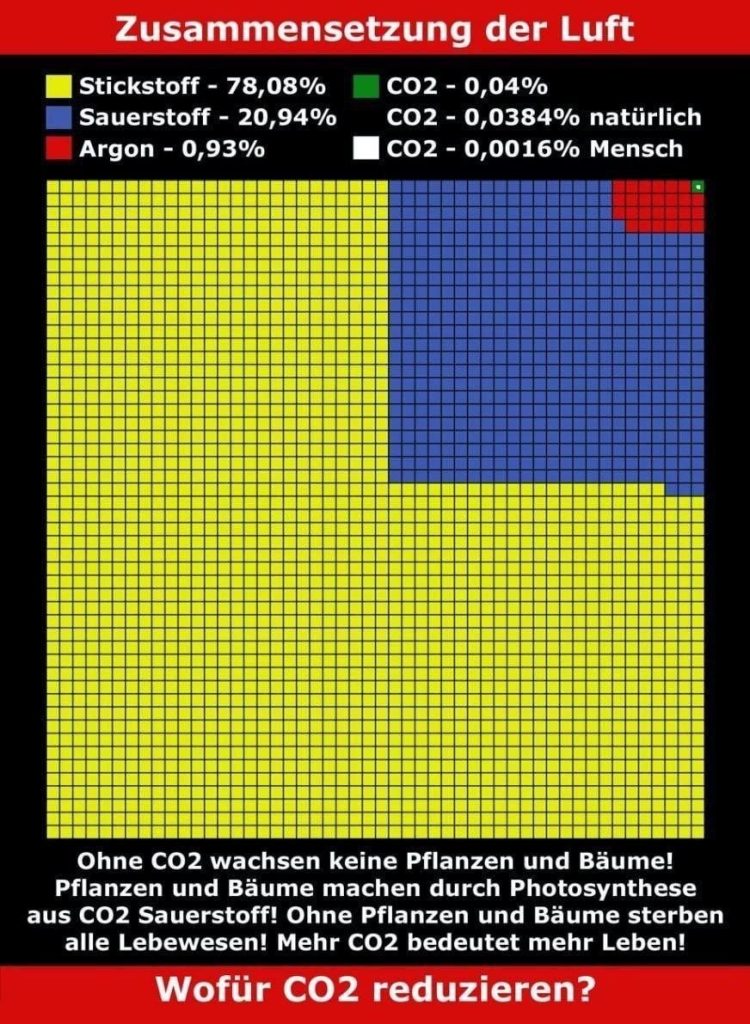
Since first documented in the 1870s, the CO2 concentration has always been .02% – .04%. There is only plant life on earth if there is enough C02 in the atmosphere.
First, we must continue to reduce poverty and meet the needs of the poor, whether through lower energy costs, clean air, or other means. With these goals in mind, we must tackle the challenges of air pollution and climate change together rather than separately, with a focus on protecting the health of people today, especially in developing countries. In the short term, health benefits can be realized by reducing emissions from burning fossil fuels. However, the reduction of carbon dioxide in the atmosphere can occur over a longer period of time. If carbon reduction efforts also include attention to non-CO2 pollutants, particularly particulate matter as small as 2.5 microns in diameter, we can expect not only improved air quality, but also health benefits in the short and long term.
Reference